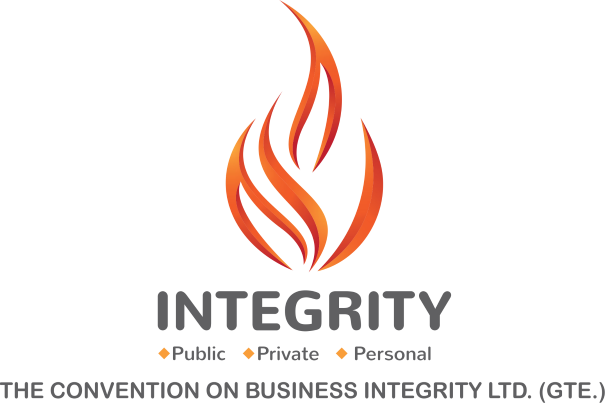Time to Clean the Augean Stables in the Private Sector

The ravages of bribery and corruption is a topic that has obviously attracted a lot of scholarly comments and opinions but very little action. This short article is aimed at examining the claims that corruption risks in the corporate sector are measurable. It aims at identifying the common forms of corruption in the corporate sector and how to eliminate same. The closest paradigm of such exercise is the OECD’s Good Practice Guidance on Internal Controls, Ethics and Compliance which works by identifying certain “corporate red flags” including bribery, kickbacks, facilitation payment, charitable and political donations (sponsorship, travel, and promotional expenses), collusion, cartels, patronage, Illegal information brokering, and tax evasion.
In curtailing bribery, enterprises are advised to consider the most prevalent forms of bribery in its risk assessment, including kickbacks, facilitation payments, gifts, hospitality expenses, political and charitable contributions, sponsorships, and promotional expenses.
While bribery is globally accepted as unacceptable practice, a less known but equally vile practice is kickback. Kickbacks is an illicit payment made to someone in return for facilitating a transaction or appointment. These take place in purchasing, contracting, or other departments responsible for decisions to award contracts. The supplier provides the bribe by kicking part of the contract fee back to the buyer, either directly or through an intermediary.
However, kickbacks differ from facilitation payments. Facilitation payments are typically small payments made to secure or expedite the performance of a routine or necessary action to which the payer is entitled, legally or otherwise.
Relatively, charitable and political donations, sponsorship, travel, and promotional expenses are legitimate activities for entities but can be abused by being used as a subterfuge for bribery. There are risks attached to such transactions where it could be judged that an advantage has been obtained thereby.
Malcolm Shackell, a Partner and consultant in the forensic, risks and controls unit of PWC gave a rather damning statistics of the incidence of bribery and corruption in the corporate environment in the following words;
Based on results from PWCs 2016 Economic crime survey (GECS) , bribery and corruption continues to rate in the top four economic crimes experienced by organizations globally and looking ahead, organizations are predicting as higher likelihood of bribery and corruption over the next two years when compared with the global average. We also know from PWCs 19th Annual Global CEO Survey that the percentage of chief executives naming bribery and corruption as one of the top risks facing their organization has experienced a significant increase recently, from 51% to 56%. ..
These statistics are as disturbing as the corruption trends in the public sector. For our purposes, the measurement of anti-corruption risk refers to the collection of methods used to estimate the likelihood of particular forms of corruption and the effect such corruption might have..
Corruption may be demonstrated in many ways, some more evident than others. To pursue the campaign towards anti-corruption, it is imperative for organizations and enterprises to carry out a review of its business to identify different types of risk that it could potentially be exposed to for instance financial, operational, infrastructural, and reputational. Identification of risks can aid the development of an approach to effectively manage and control risk. This would invariably include a review of the current anti-corruption strategy of the organization and evolvement of new ones to either complement the existing apparatus or entirely replace them.
The communication of the risk management strategy of the organization to its employees is sequel to the development of a risk management approach. Organizations are enjoined to develop coherent, direct and practical strategies for the purpose of effectively communicating its anti-corruption principles to the employees for effective application. Effective monitoring and evaluation of the application process is critical for the continuous update of the strategy and to ensure the continued relevance of adopted mechanisms. Undertaking a “gap analysis” of the current program in the light of the risks identified is one way of monitoring application. Gap analysis can provide recommendations for improvement to the program based on common leading practices but also what is most practicable for the particular organization in terms of achieving compliance.
While it is conceded that there may be no fool proof system in place yet, for measuring the myriad of corporate risks facing an organization in most companies in Nigeria, one cannot deny the existence of informal arrangements that leverage on the moral turpitude of the staff of the organization who conform to the organization’s moral code to avoid acts that might dent the reputation of the organization.
Some key questions for an effective risk assessment regarding an enterprise’s written standards include:
Do we have the right policies in place? Do we need to translate our policies into additional languages as a result of the country risks identified in our assessment? An enterprise’s written standards should first and foremost, be tailored to meet the needs of the enterprise. The standards should also be accessible to the target population, both literally and linguistically. What will the frequency and timing of these trainings be?
Having identified gaps, it may be necessary to consider training plans and communication efforts to promote standards. Training plans and communication efforts must be targeted and based on the risk profile of the company. Key questions answered by an effective risk assessment about an enterprise’s training plan include:
Are there particular subsections of our employee base (e.g., mid-level managers) that need additional training? What about mid-level managers—do they need additional training?
Have we measured the quality and thoroughness of the training materials or tested employee retention of the subject matter?
Risk assessment results can assist enterprises in improving the quality of existing training, and for those smaller enterprises, they can help identify the at-risk populations that are in critical need of training.


